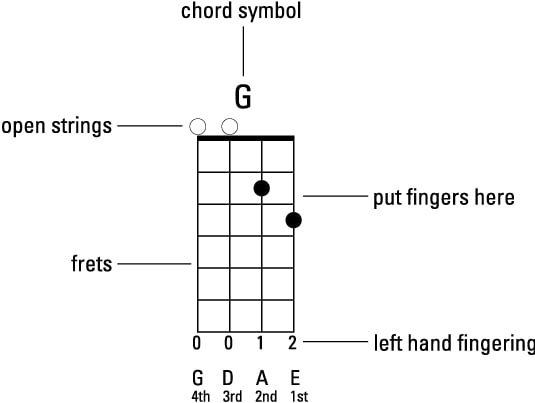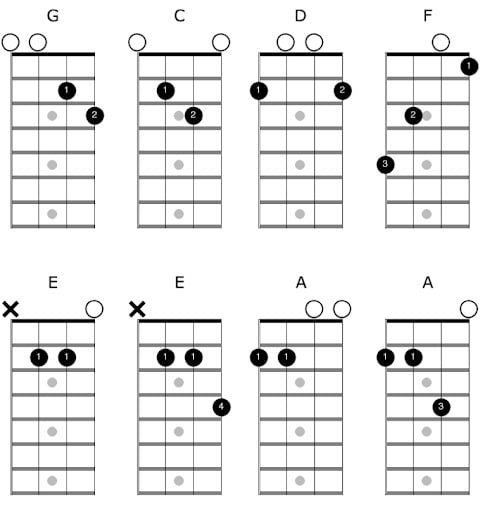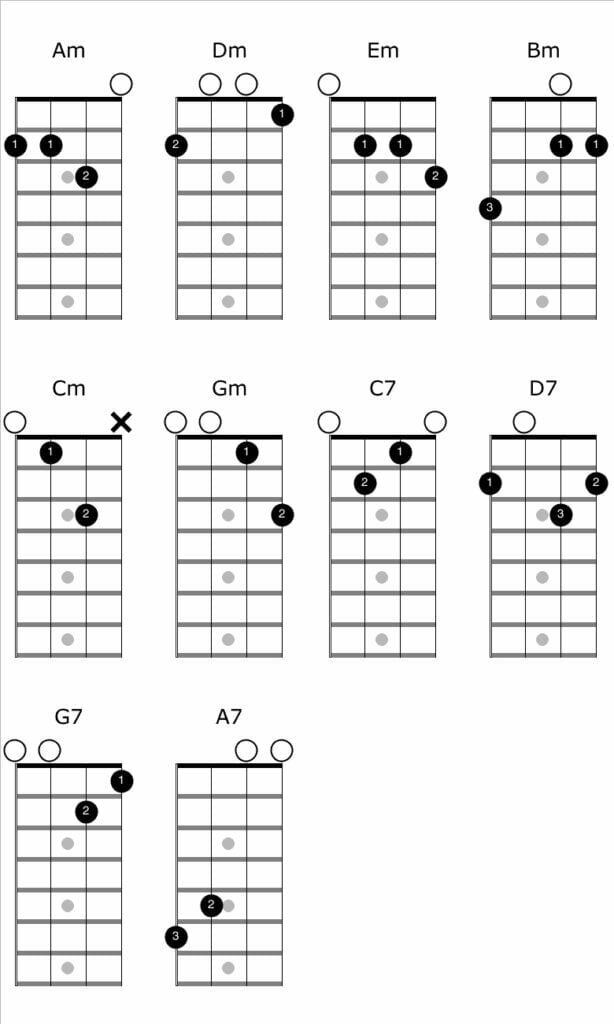Mastering the skill of reading mandolin chords is essential for any mandolin player. Mandolin chord diagrams provide a visual representation of finger placement on the strings and frets. This guide will walk you through the process of interpreting mandolin chord diagrams, from identifying strings and frets to understanding the symbols and finger placement. By learning to read mandolin chords, you’ll be able to play a wide variety of chords with ease, enhancing your playing and musical expression.
Contents
How to Read a Mandolin Chord Diagram
One of the most popular methods of showing mandolin chords is using chord diagrams. A chord diagram is a representation of a mandolin fretboard with various symbols placed along vertical and horizontal lines. Below is a chord diagram illustration:
Understand the grid
A mandolin chord diagram consists of horizontal lines representing the mandolin’s strings and vertical lines representing the frets on the fingerboard. The top line represents the thinnest string (usually the highest pitch), and the bottom line represents the thickest string (usually the lowest pitch).
Identify the dots
The dots on the chord diagram indicate where you should place your fingers on the corresponding frets and strings. The numbers inside the dots indicate which fingers to use (1 for index, 2 for middle, 3 for ring, 4 for pinky).
Recognize the string names
The string names are typically displayed on the left side of the diagram, starting with the thinnest string (e.g., E, A, D, G).
Read the chord symbol
Above or below the chord diagram, you’ll find the chord symbol or name, such as “C,” “G7,” or “Dm.” This indicates the specific chord you’re playing.
Strum accordingly
After understanding the finger placement and string names, strum or pick the mandolin strings starting from the designated string indicated on the chord diagram (often marked with an arrow). Strum all the strings or only the indicated strings, depending on the diagram.
By following these steps, you can effectively read a mandolin chord diagram and play the corresponding chord on your instrument. Remember to practice and experiment with different chord diagrams to expand your repertoire and playing skills.

Major Chords
In order to improve your playing, it is essential to familiarize yourself with the fundamental open chords that you must know.
Here are the major open chords:

Minor and Seventh Chords
It’s imperative to become familiar with the fundamental open chords you need to know if you want to improve your playing.
Here is how you play minor and dominant seventh open chords:

Conclusion
Learning how to read mandolin chords is a valuable skill before you learning to play a mandolin. By understanding mandolin chord diagrams, players can quickly grasp and reproduce chords, allowing for greater versatility and creativity in their music. With practice and familiarity, reading mandolin chords becomes second nature, and expand their musical repertoire.
